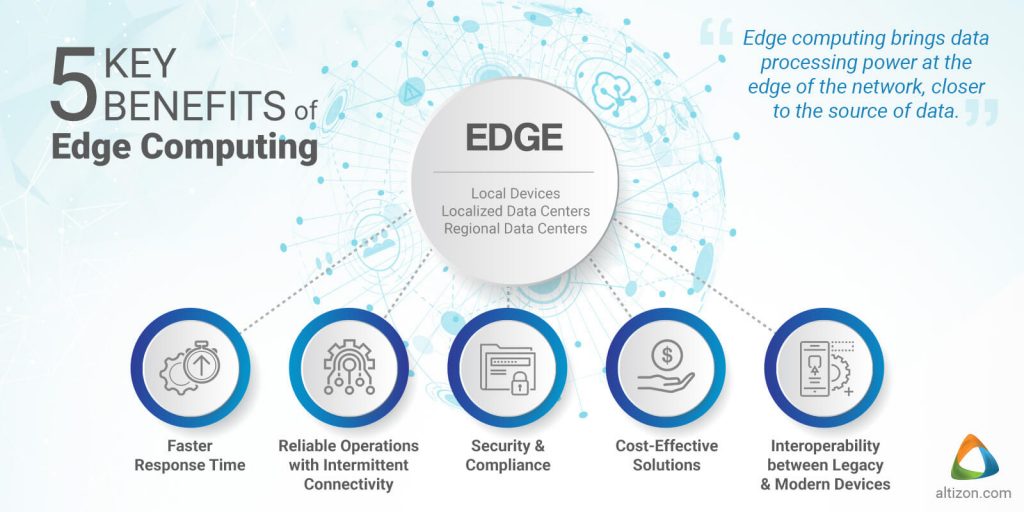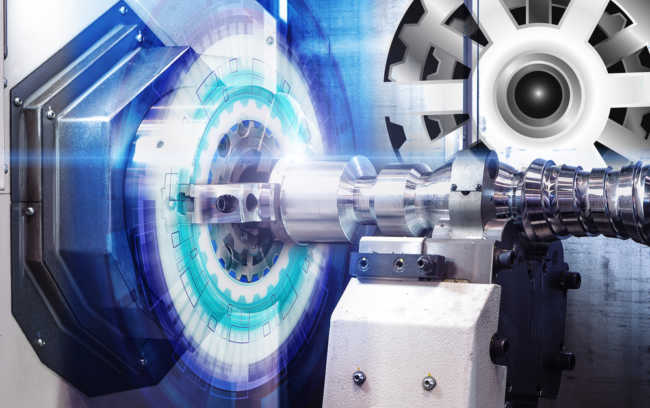Edge Computing Benefits – Key Drivers for Smart Manufacturing
Edge computing has many beenefits; it means faster response times, increased reliability and security. A lot has been said about how the Internet of Things ( IoT ) is revolutionizing the manufacturing world. Many studies have already predicted more than 50 billion devices will be connected by 2020. It is also expected over 1.44 billion data points will be collected per plant per day. This data will be aggregated, sanitized, processed, and used for critical business decisions.
This means unprecedented demand and expectations on connectivity, computational power, and speed of quality of service. Can we afford any latency in critical operations such as operator hand trapped in a rotor, fire situation, or gas leakage? This is the biggest driver for edge computing. More power closer to the data source-the “Thing” in IoT.
Edge Computing Benefits and Drivers
Rather than a conventional central controlling system, this distributed control architecture is gaining popularity as an alternative to the light version of data center and where control functions are placed closer to the devices.
Edge computing has many advantages and it means data processing power at the edge of the network, closer to the source of data. With edge computing we benefit of: each device—whether it be a sensor, robotic arm, HVAC unit, a connected pump, or any intelligent device—collects data, uses data processing model performed by the cloud, and packages it up for processing and analysis.
IDC research predicted in 3 years, 45% of IoT-created data will be stored, processed, analyzed, and acted upon close to, or at the edge of, the network and over 6 billion devices will be connected to the edge computing solution. Inherent challenges of the cloud infrastructure such as network latency, cost of network bandwidth and data storage, security, and compliance issues are minimized by edge computing infrastructure and are the key drivers of edge technology.
In general, there are three types of edge computing:
- Local devices to accommodate a defined and specified purpose. These are easy to deploy and maintain.
- Localized data centers which provide significant storage and processing powers. These are pre-engineered and made to order and assembled onsite. They are good saving on capital expenditures (CAPEX).
- Regional data centers are located closer to data source than the centralized cloud data center. They will have higher storage and processing power than localized data centers but are costlier and need more maintenance. These edge devices can be designed with either made-to-order or prefabricated variants.
Five Key Benefits of Edge Computing
As edge computing is adopted and goes mainstream, there are many potential advantages for a wide range of industries. Edge computing, in particular, brings five potential advantages to smart manufacturing:

1. Faster response time
Power of data storage and computation is distributed and local. No roundtrip to the cloud reduces latency and empowers faster responses. This will help stop critical machine operations from breaking down or hazardous incidents from taking place.
2. Reliable operations when intermittent connectivity
For most remote assets, monitoring or unreliable internet connectivity regions such as oil wells, farm pumps, solar farms or windmills can be difficult. Edge devices’ ability to locally store and process data ensures no data loss or operational failure in the event of limited internet connectivity.
3. Security and compliance
Due to edge computing’s technology, A lot of data transfer between devices and cloud is avoidable. It’s possible to filter sensitive information locally and only transmit important data model building information to the cloud. This allows users to build an adequate security and compliance framework that is essential for enterprise security and audits.
4. Cost-effective solutions
One of the practical concerns around IoT adoption is the upfront cost due to network bandwidth, data storage, and computational power. Edge computing can locally perform a lot of data computations, which allows businesses to decide which services to run locally and which ones to send to the cloud, which reduces the final costs of an overall IoT solution.
5. Interoperability between legacy and modern devices
Edge devices can act as a communication liaison between legacy and modern machines. This allows legacy industrial machines to connect to modern machines or IoT solutions and provides immediate benefits of capturing insights from legacy or modern machines.
Conclusions
With so many advantages of edge computing, the edge has an “edge” over the cloud. One may think whether edge computing will replace the cloud, however, that’s unlikely. The cloud has its own advantages such as computation power, storage, and maintenance, which edge computing doesn’t have. Instead, edge computing complements the cloud to create an overall IoT solution.
While edge computing has the advantages of local computation and faster decision-making, the cloud brings the power of large data set computation, predictive and machine learning, and artificial intelligence algorithms. Combined, the power of edge computing and the cloud work to build a cost-effective, powerful IoT solution for smart manufacturing. More about The Intelligent Edge: What it is, what it’s not, and why it’s useful
This article was written by Abhijit Mhetre, VP of Marketing at Altizon Systems. Abhijit brings along over 19 years of techno marketing, strategic innovation, and project management consultancy experience from three different continents. After 11 years in corporate techno-marketing, since 2011, Abhijit is highly active in entrepreneurial activities with Canvazify, a team collaboration and innovation product under his belt.
